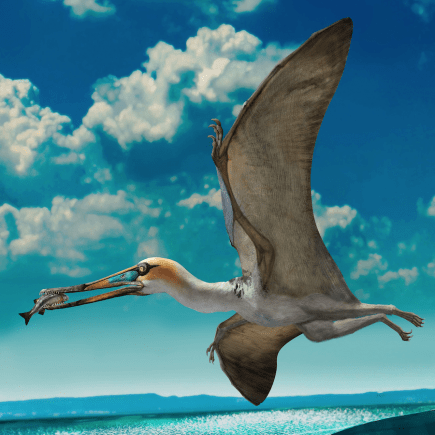
According to a study published by the Cretaceous Research journal for the June 2020 edition, three species of pterosaurs may have roamed the sky in prehistoric Western Morocco. The fish-eating two toothed pterosaurs had wings spanning three to four meters wide. The pterosaurs species is thought to have undergone a diversification in the Late Jurassic and Early Cretaceous, and then a major turnover in the mid-Cretaceous, when ornithocheirids and basal azhdarchids were replaced by pteranodontids, nyctosaurids, and azhdarchids.
The Pterosaurs lived over 100 million years ago when the ancient Sahara desert landscape was ruled by carnivorous and theropods dinosaurs like the Deltadromeus and Carcharodontosaurus – the latter were portrayed in Mark Hallett’s polarizing painting ‘Thunder Across the Delta’. Like his peers, the pterosaurs were discovered in the Kem Kem Beds area, a geological formation between the border of Morocco and Algeria.
The Kem Kem Beds is an arid atmosphere of Morocco’s reddish Cretaceous rock territory. It is often visited by fossil hunters and collectors from the scientific community seeking to grow both personal or museum collections. Due to the geological processes and the nature of fossilization, paleontologists visiting the Sahara have long expressed the challenge of clearing answering questions concerning the ratio of predatory dinosaurs to herbivorous. Furthermore, it remains undetermined if all these dinosaurs were present at the same time.
The latest pterosaurs’ findings take a step in the direction of closing this gap of information. Prof David Martill, a paleontologist at the University of Portsmouth shared that the new information confirms his belief that we are entering a golden age for discovering pterodactyls. “This year alone we have discovered three new species and we are only into March.”
Morocco’s Sahara region has long been a favorite destination of geologists, paleontologists, and archeologists. Less than 100km from the Kem Kem Beds, the historical village Erfoud is considered as the “world’s largest open-air fossil museum.”





